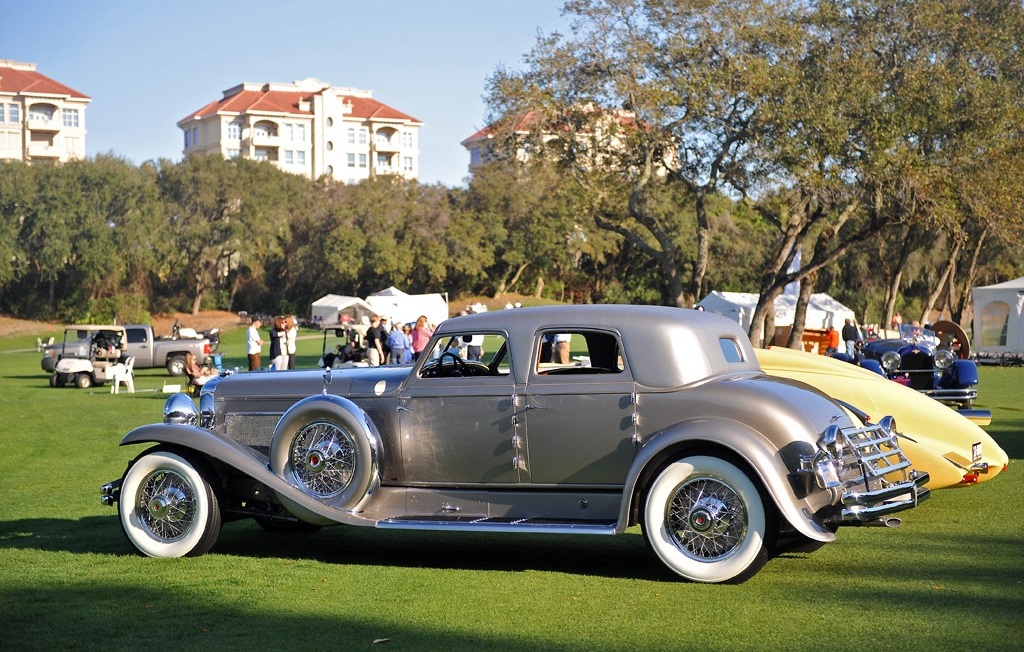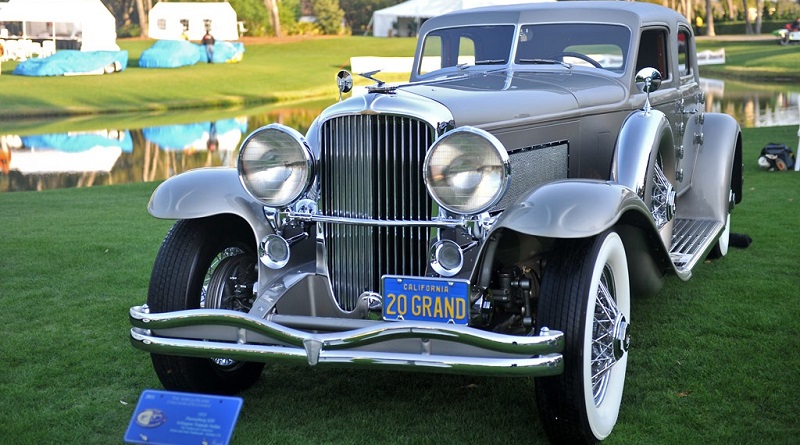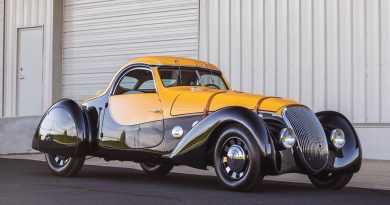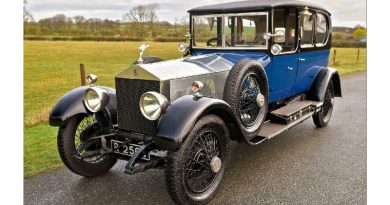1933 Duesenberg SJ Arlington Torpedo
The “Twenty Grand” is the name given to the one-off custom 1933 Rollston SJ Arlington Torpedo-bodied Duesenberg SJ ultra-luxury sedan. The design’s initial price tag of $20,000 was the most expensive Duesenberg ever constructed and it is widely considered to be the most beautiful Duesenberg ever built. It is currently one of the most valuable cars in the world, worth over $40 million today.

Duesenberg’s place in history was officially solidified in 1914 when Eddie Rickenbacker drove a Duesenberg to an astonishing 10th place finish at the Indianapolis 500. Duesenberg later went on to win the race, capturing overall victories in 1924, 1925, and 1927. A Duesenberg was used as a pace car for the Indianapolis 500 in 1923.
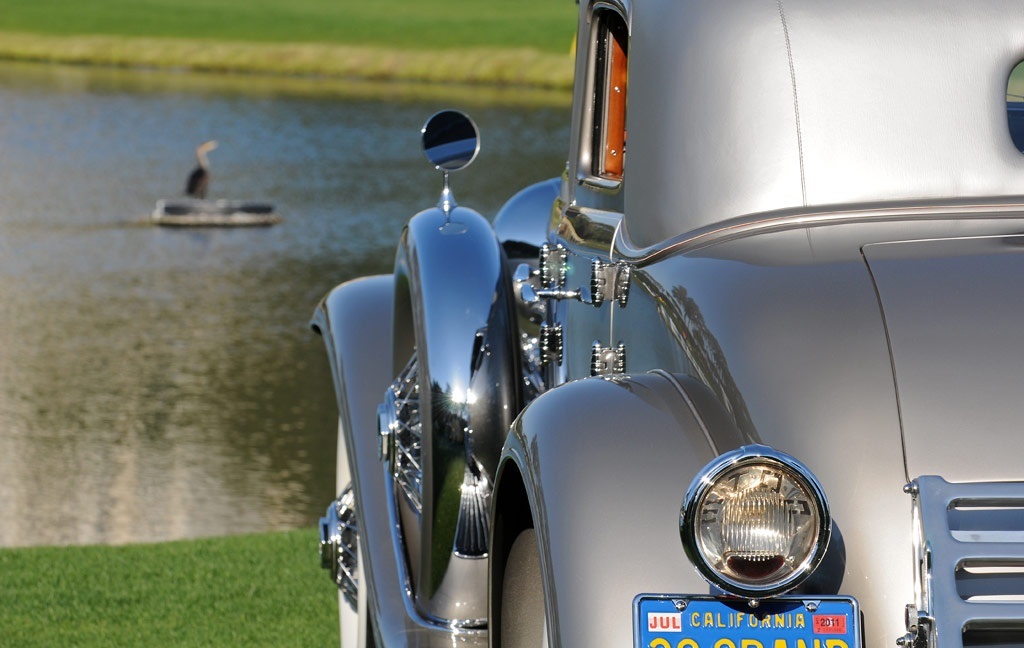
Duesenberg’s racing pedigree was not just reserved for the United States; in 1921, Jimmy Murphy drove a Duesenberg to victory at the French Grand Prix at the LeMans racetrack. This made him the first American to win the French Grand Prix. It also made the Duesenberg the first vehicle to start a Grand Prix with hydraulic brakes.

The Duesenberg headquarters and factory was relocated in July of 1921 from New Jersey to Indianapolis. Part of the purpose of the move was to focus more on the production of passenger vehicles. The Company had a hard time selling their Model A car. This was a very advanced car with many features not available on other vehicles being offered at the time. The engine had dual overhead cams, four-valve cylinder heads and was the first passenger car to be equipped with hydraulic brakes.
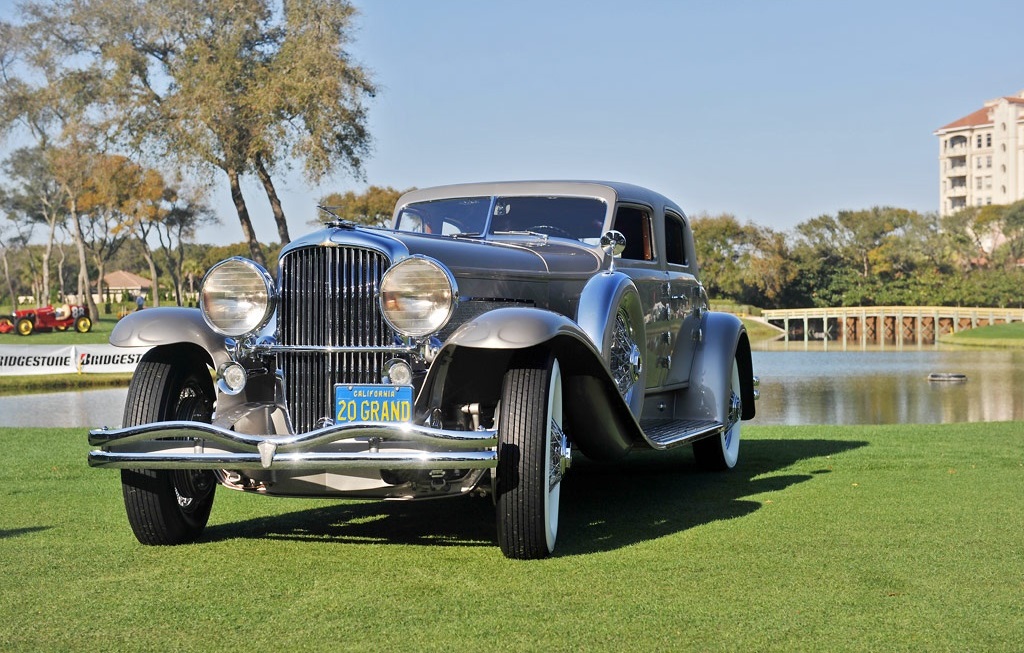
The Duesenberg Company produced 667 examples of the Model A, making it their first mass-produced vehicle. The Model A was powered by a 183-cubic-inch single overhead camshaft inline eight-cylinder engine. The strain of racing, moving, and lack of selling automobiles sent the company into receivership in 1922. After a few years, it’s debts had been resolved, thank in-part to an investor group. The company re-opened in 1925 as the Duesenberg Motors Company.
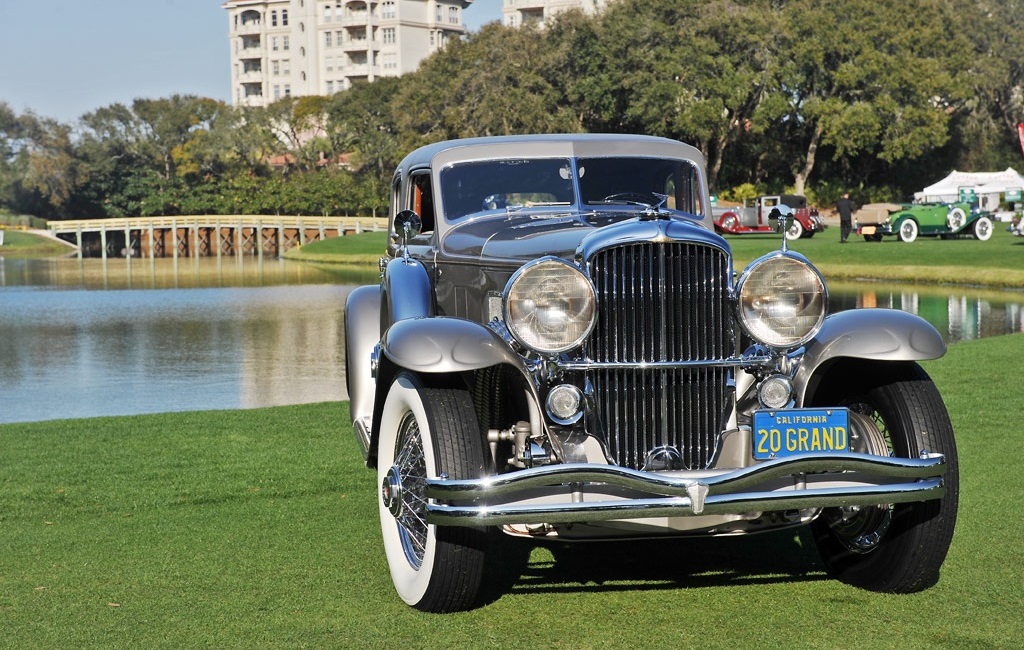
The engine of this 1933 Duesenberg SJ Arlington Torpedo had dual overhead camshafts and eight-cylinders with four valves per cylinder. It displaced 420 cubic-inches and produced an impressive 265 horsepower in un-supercharged form. The engine had been designed by Fred Duesenberg and constructed by the Lycoming Company, which had been recently acquired by E.L. Cord. There was a brilliant lubrication system which automatically lubricated various mechanical components after sixty to eighty miles. Two lights mounted on the dashboard indicated when the lubrication process was transpiring. After 750 miles, lights mounted on the dashboard would light-up indicating the oil required changing. After 1500 miles, the lights would illuminate indicating the battery should be inspected. The top speed was 119 mph and 94 mph in second gear. With the use of a supercharger, the top speed increased even further, to nearly 140 mph. Zero-to-sixty took around eight seconds with 100 mph being achieved in seventeen seconds.
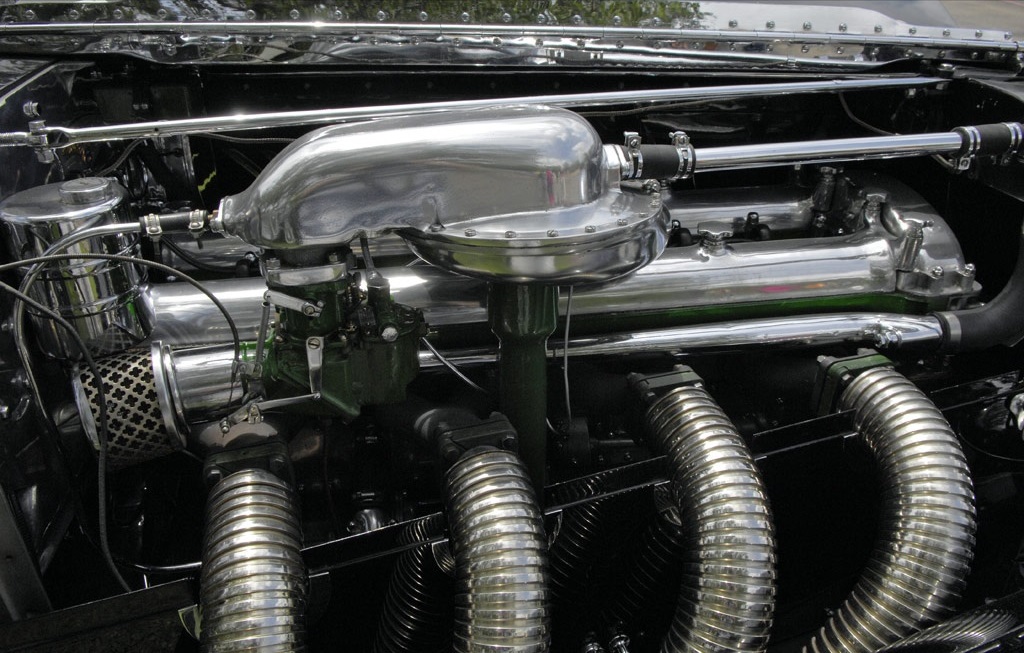
In 1980 it was named Best of Show at the Pebble Beach Concours d’Elegance. In the late eighties, the car was selected to be exhibited in Essen, Germany, as one of the ‘The Ten Most Beautiful Cars in the World.’
